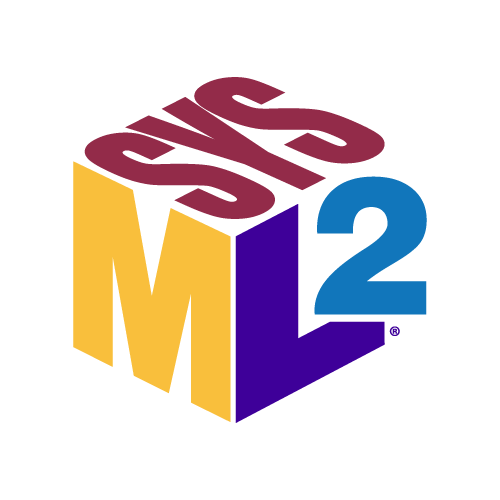What is MBSE and how can it help my company?

Over the last few years systems engineering has progressed from primarily document-based methods to a more structured, efficient and beneficial approach called model-based system engineering (MBSE). The International Council on Systems Engineering (INCOSE) states that the future of systems engineering is model based and system models will become the core communication platform between all stakeholders and engineers. [1]
INCOSE defines MBSE as the modeling of system requirements, designs, analysis, verification and validation activities beginning in the conceptual design phase and continuing throughout development. [2]
Adopting MBSE methods improves product development in the following ways:
- Increases product quality by reducing design errors and inconsistencies
- Improves communication and collaboration within engineering and the wider enterprise
- Accelerates product development and reduces costs through early detection and correction of design issues
- Reduces risk with virtual simulation and prototyping
MBSE is a key pillar of PTC's engineering digital thread, connecting requirements to system functions, architecture designs and downstream detailed designs in PLM and CAD. Alongside this network of interconnected design artefacts, MBSE also provides a framework for coordinating and orchestrating the various engineering disciplines, as well as suppliers or design partners.
A recent report into MBSE by CIMdata provided the following insights [3]:
- 67% of companies said MBSE delivers improvement in product quality
- 59% of companies said MBSE delivers reductions in total engineering costs
- 55% of companies said MBSE delivers a reduction in engineering change orders
- 50% of companies said MBSE delivers a reduction in physical prototypes
Why is SysML 2.0 important?
SysML (Systems Modeling Language) is a modeling language and graphical notation for defining complex systems, maintained by OMG (Object Management Group). SysML 2.0, the successor to SysML 1.x, aims to improve MBSE effectiveness and increase industry adoption.
SysML 2.0 has a new metamodel with both graphical and textual notation and a standardized API to access the model (based on REST and OSLC). It is more precise, expressive, interoperable, and extensible and the definition and usage pattern enables reuse, usability, and automation.
SysML 2.0 supports the modeling of system requirements, architecture, behavior, analysis/simulation and testing/verification, as shown below.

SysML 2.0 is planned to be officially released in Summer 2025 and is expected to emerge as the de facto standard for MBSE.
How PTC can help
PTC have been actively involved in the development of SysML 2.0 from the beginning and have made SysML 2.0 a priority in the product roadmap for PTC Modeler, PTC'S MBSE solution. Starting with PTC Modeler 10.0, 10.1 and in Summer 2025, PTC Modeler 10.2, PTC are delivering SysML 2.0 capabilities incrementally.

PTC Modeler helps your systems and software engineers create consistent, high-quality models to communicate requirements, identify key functions, define product architectures, analyze design alternatives and make good trade-off decisions.
Key features:
- Model-based system design
- Model-based software design
- Product line engineering for variability management
- Multi-user, multi-discipline collaboration
- Digital thread traceability with Codebeamer, IBM DOORS Next, Siemens Polarion and Windchill PLM.
- Built-in configuration management
- Standards-based modeling with support for UML, SysML 1 and 2, UPDM and UAF.
- Secure model management using SQL Server
When combined with PTC's Codebeamer and Windchill PLM, PTC Modeler provides a complete solution for end-to-end, integrated product engineering, which is illustrated below.

PTC Modeler SysML 2.0 capabilities
PTC Modeler 10.2 (released Summer 2025) provides features for the following areas of SysML 2.0:
- Package modeling
- Requirements modeling
- Structure modeling (parts, ports, interfaces etc.)
- Behavior modeling (actions, states, transitions, etc.)
- Analysis and verification modeling
- Variability modeling
- Textual notation importer
- OSLC-based digital thread integrations with Codebeamer, Windchill PLM, IBM DOORS Next and Siemens Polarion

Future releases of PTC Modeler will include the following capabilities:
- Expressions, constraints and calculations
- Model authoring with textual notation
- Textual notation exporter
- View and viewpoints
- Windchill PLM Exporter to transfer system architecture models to PLM
- SysML 2.0 API (REST and OSLC)

More information
For more information visit our website:
https://www.ptc.com/en/products/ptc-modeler
To try the software free for 30 days:
https://www.ptc.com/en/products/ptc-modeler/free-trial
Contact:
Patrick Ollerton, Senior Product Manager
[email protected]
YouTube channel
https://www.youtube.com/@ptc-systemsandsoftwareengi8900



References:
[1] INCOSE Systems Engineering Vision 2035
[2] INCOSE Systems Engineering Vision 2020
[3] CIMdata A&D PLM Action Group Model-Based Systems Engineering Research
[4] Introduction to the SysML v2 Language Graphical Notation, Sanford Friedenthal